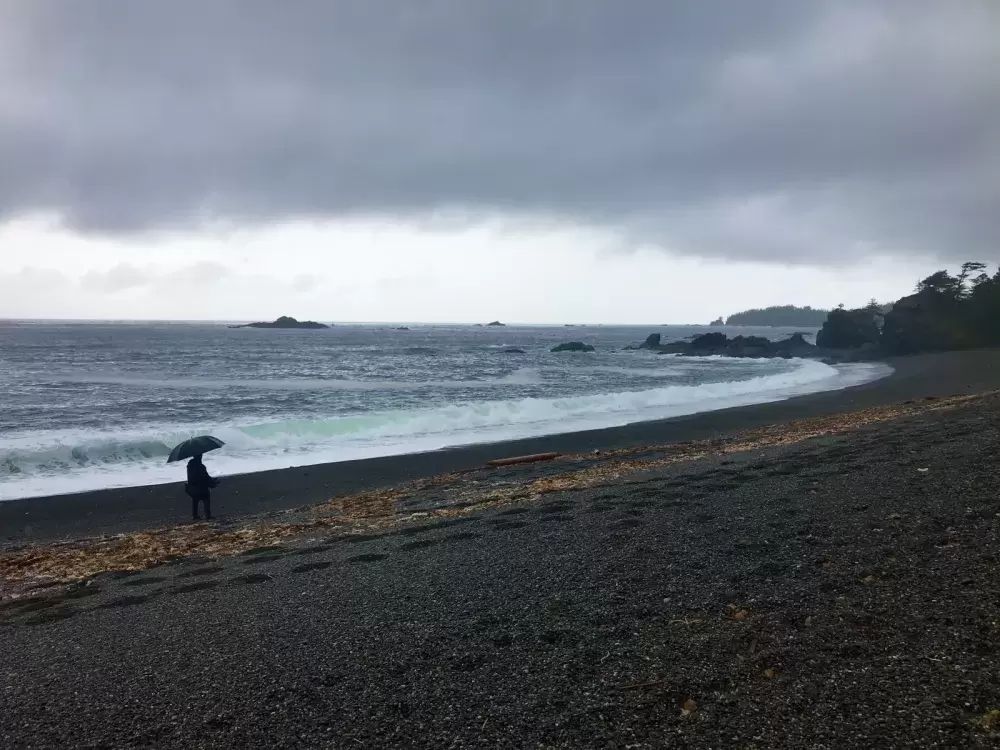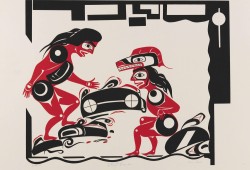Ocean Networks Canada has produced a documentary film that explores the history of Pacific Northwest coast tsunamis with the goal of enhancing safety for today’s coastal communities.
Tsunami 11th Relative arose from the Northwest Vancouver Island Tsunami Risk Project, led by the Strathcona Regional District in partnership with local First Nations, Ocean Networks Canada, four municipalities, two regional districts and several stakeholders.
The First Nations involved in the project include Ka:’yu:’k’t’h’/Che:k:tles7et’h’, Nuchatlaht, Ehattesaht/Chinehkint, Quatsino, and Mowachaht/Muchalaht First Nations.
The name of the film comes from a story shared by Hesquiaht carver Tim Paul, according to producer Pieter Romer.
“I learned from Nuu-chah-nulth artist, Tim Paul, who was taught by his grandmother, that sky, sun, moon, mountains, rivers, lakes, land, sea, wind, and stars are all our relatives,” he explained, adding that earthquake "is our 11th relative which is intended to teach humility - remind us of our place in this world and that we are the very smallest part of this universe.”
One of these stories includes a magnitude nine earthquake that occurred in the Cascadia subduction zone on January 26, 1700, producing a tsunami so large it reached the top of mountains. This knowledge has impacted modern practices, such as the practice of communities’ installing back-up solar power generation on higher ground.
According to the Pacific Northwest Seismic Network, the Cascadia Subduction Zone "megathrust" fault is a 1,000 kilometres-long dipping fault that stretches from Northern Vancouver Island to Cape Mendocino California. It separates the Juan de Fuca and North America plates. The Juan de Fuca plate moves toward, and eventually is shoved beneath, the continental North American plate.
The documentary explores traditional Indigenous knowledge and ocean science, combining the two so that communities can be better prepared for the “big one.”
Pieter Romer,who also serves as ONC Indigenous community liaison, says Aboriginal Peoples’ survival and adaptations in the face of past devastating earthquakes and tsunamis are woven into the stories handed down through generations.
“We know in our family history that we are the survivors of the last big earthquake, the big tsunamis,” said Tim Paul.
A preview clip of the film, featuring Nuchatlaht House Speaker Archie Little, is posted on the Ocean Networks Canada website.
“The Oceans Networks Canada (ONC) supported documentary shares Indigenous knowledge of past ‘great saltwater floods’ that reached northwest Vancouver Island, told through a tapestry of stories set against the backdrop of the rich, natural beauty of the island,” reads and ONC media advisory.
Besides the great earthquake and tsunami of 1700, elders share knowledge of the 1964 tsunami that surged through Hot Springs Cove, Port Alberni, and Zeballos.
Besides its educational value, the film also preserves the oral history of local First Nations.
“Generational knowledge is a critical component in tsunami risk assessment as it helps us see the whole picture and mitigate future impacts in our communities,” said Romer, who is of Nisga’a descent.
Tsunami 11th Relative will be touring Vancouver Island from April to June 2023 with free public screenings. The tour started in Port Alberni on Friday, April 14 and finishes in Victoria, at UVic in early June.
Other stops include Kyuquot on May 2, Oclucje on May 3, Zeballos with two showings on May 4, Campbell River on May 5, Tsaxana on May 6 with another showing at the Gold River Community Hall and Tahsis on May 7.
Go to https://www.oceannetworks.ca/news-and-stories/stories/new-documentary-explores-history-of-west-coast-tsunamis-from-indigenous-perspective/ for a full list of showing dates, times and locations.


